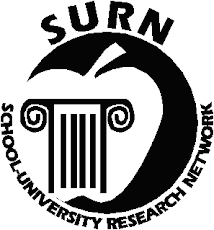
Share your examples of meeting students where they are and supporting their learning by adding a comment.
Dr. Carol Ann Tomlinson shares in an article in this month’s Educational Leadership anecdotes about three students she taught to provide support for why differentiation is a vital way to support student learning.
Dr. Tomlinson found that by watching colleagues teach she became a stronger teacher. However, it was her studying of students whom she taught that taught her more about her professional practice. “Learning has to be about individual learners. And given the chance, those learners will challenge our ‘certainties’ about instruction” (p. 14). Dr. Tomlinson provides three examples of where a teacher may personalize instruction to meet a student’s need. “In each case, starting where the student was resulted in a student with higher aspirations, a teacher with more self-efficacy, and some great memories” (p. 16).
1) Connect with students’ interest (p. 14) Dr. Tomlinson wrote about “Scott” who loved to draw cartoons, but had relatively interest in her English class. His classmates loved his work. Scott figured out that earning a “C” got him lectures from his parents and plenty of time to pursue his passion, but a “D” would result in being grounded. So did enough to get by. When Scott asked Tomlinson if she thought the school would let him use the copier to run off copies of a comic book he wrote, an opportunity arose. As Scott experienced success with the comic books including selling ads to offset costs of commercial printing, he had a strong need to know that Tomlinson capitalized upon and Scott benefited by. She channeled his need to know to the language arts requirements for the year. Scott began interfacing with comic illustrators, made comics using the vocabulary words, his editing skills improved through his work on ads and in the comics, and he would discuss literary elements with his teacher. In class, Tomlinson would use language from his cartoons for students to name parts of speech and study grammatical constructions.
2) Finding the right starting point (p. 15) is about meeting students where they are in order to support their learning. “Golden” was a 15 year old in 7th grade who confided in his teacher (Tomlinson) that he did not know how to read. Tomlinson shares that teaching reading was something that she needed to learn to support her 7th grader as by this time many students are reading to learn as opposed to needing to learn to read. She met him where he was at, a need to know his ABCs. She engaged him in word study and used books on tape to engage him in discussions of elements of literature. Golden had a tailored spelling list. Tomlinson’s work with Golden was her initial foray into differentiating in the classroom to meet learning needs.
3) Giving permission (p. 16) works well with students with a high degree of intrinsic motivation. Geoff was an eighth grader who loved dinosaurs and told Tomlinson that he knew that school would not be a place where he could pursue his passion until he went to the university. Geoff suggested to Tomlinson that each week they meet so that she could share with him what was really important for him to learn that week. He could then work at his own pace to meet her learning goals and then have time for independent study. Tomlinson’s first thought was everything is important, and what she articulated to Geoff reflected a valuing of him. She worked with him. Tomlinson found that talking with Geoff to identify what mattered most and why was a good practice for her in addition to benefitting him. Geoff, true to his word, studied dinosaurs and extinction theories. He presented his findings to the class and teacher who admittedly did not understand much of the content due to the level but, they all understood the incredible undertaking and learning that occurred.
Want to read the article?
Tomlinson, C. A. (2010). One kid at a time. Educational Leadership, 67(5), 12-16.
Consider coming to Dr. Tomlinson’s session at the 2010 National Leadership Academy in Williamsburg on June 22, 2010. Registration is now open.





These helpful ways of great teachers may be useful to educators in leadership or in school teaching, and inspirational: http://www.geocities.ws/greatteachersari
ReplyDeleteautisable
ReplyDelete